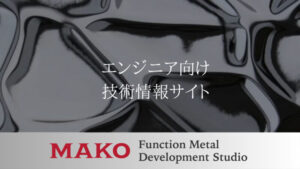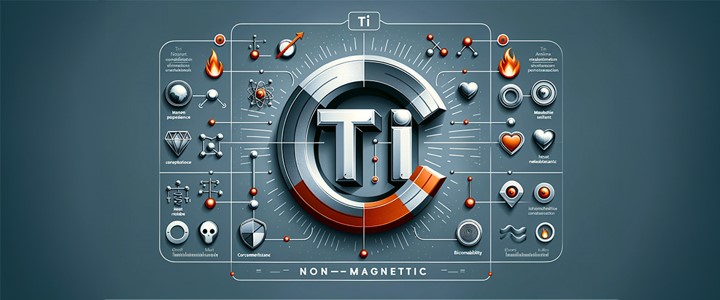
Titanium is a lightweight and highly corrosion-resistant metal.
Metals with similar properties include stainless steel and platinum.
Stainless steel may or may not attract magnets, depending on its crystalline structure.
So, does titanium or titanium alloy attract magnets? We will verify.
contents
About Titanium – From its Origins to the Present
Titanium is a metal known for its high strength, light weight, and exceptional corrosion resistance.
Its discovery dates back to 1791, found by William Gregor, an English pastor and amateur chemist.
While analyzing sand containing this new element, Gregor discovered an unknown white metallic oxide.
Later, German chemist Martin Heinrich Klaproth named it “titanium” after the Titans of Greek mythology.
Initially, titanium was recognized as a very rare and valuable metal.
Its extraction was complex and costly.
However, the 20th century saw a dramatic advancement in titanium production technology.
Especially in 1946, the Kroll process developed by William Kroll in America made commercial production of titanium viable.
This method involves converting titanium ore into titanium chloride and then reducing it with magnesium to extract metallic titanium.
The characteristics of titanium have led to increased use in the aerospace and military industries.
Its non-magnetic nature, high corrosion resistance, strength, and biocompatibility,
have made it useful for a wide range of applications, from structural materials for aircraft to artificial joints and dental implants.
Additionally, its heat resistance makes it suitable for use in high-temperature environments, becoming indispensable for parts of rockets and jet engines.
Titanium’s non-magnetic property means it is not affected by strong magnetic fields,
making it suitable for use in materials for MRI scanners and bomb disposal robots.
This has made titanium a highly valuable material in the fields of medicine, scientific research, and security.
Today, titanium’s unique properties are being explored for even more applications.
Its lightweight and high strength characteristics contribute to the efficiency of transportation equipment, supporting sustainable development.
The development of titanium continues alongside scientific and industrial progress, with its potential expanding into the future.
Characteristics of Titanium
Titanium exists as pure titanium and as alloyed titanium, which has added special features.
First, we will explain the characteristics of pure titanium.
1. Non-magnetic
Pure titanium is a non-magnetic metal and does not react to magnetic fields.
Therefore, it is suitable for medical devices that use magnetic fields, like MRI, and precision equipment that should avoid electromagnetic interference.
2. High Corrosion Resistance
It is resistant to seawater, saltwater, chromic acid, and other strong acids.
Hence, it is used as a material for chemical plants and marine structures.
3. Biocompatibility
It has very little reaction to the human body.
This property makes it widely used in the medical field for implants and surgical tools.
4. Heat Resistance
It maintains its strength even under high temperatures.
This performance makes it useful for engine parts and structural materials for spacecraft.
5. Lightweight
It has a high strength-to-density ratio, being lightweight yet maintaining high strength.
This feature makes it valuable in the aerospace and automotive industries.
These properties are why pure titanium is highly valued across a wide range of industries.
Particularly, its non-magnetic nature significantly broadens its range of applications.
Explanation of titanium’s weight, performance, characteristics, and applications
Verifying the Magnetic Properties of Titanium
Now, let’s actually verify the magnetism of pure titanium.
The verification method involves attaching a magnet to see if it sticks.
Pure Titanium
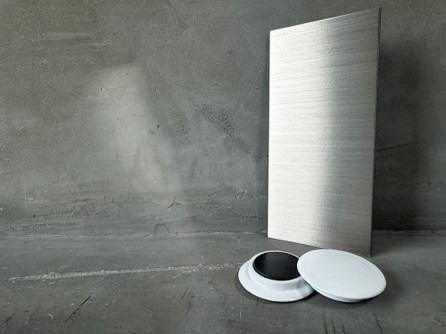
Pure titanium is non-magnetic, so the magnet does not stick at all.
Pure Titanium Anodized (Anodic Oxidation Material)
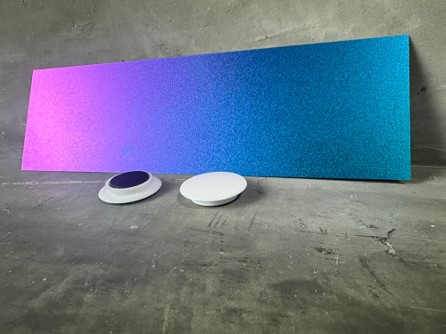
This is titanium that has been electrolytically colored.
Pure titanium anodized (anodic oxidation material) is also non-magnetic, so the magnet does not stick at all.
Pure Titanium PVD (Physical Vapor Deposition)
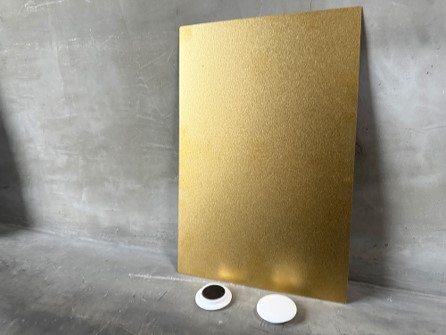
This is pure titanium that has been coated using physical vapor deposition.
It is also non-magnetic, so the magnet does not stick at all.
Alloyed Titanium
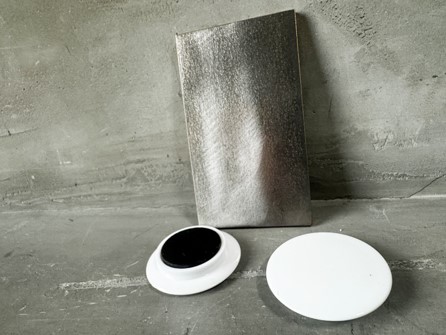
This is an alloyed titanium with properties surpassing those of the 64 alloy titanium.
Alloyed titanium is also non-magnetic, so the magnet does not stick.
Verifying the Magnetic Properties of Other Metals
Next, we will actually verify the magnetism of other metals.
Painted Steel Sheet
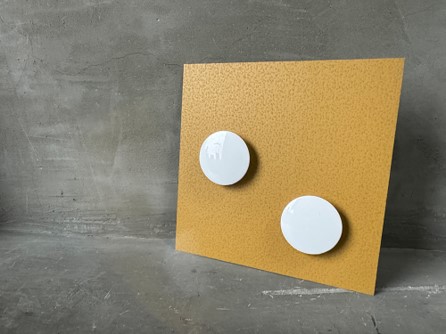
A common painted iron sheet.
It is magnetic, so the magnet sticks perfectly.
Galvanized Steel Sheet
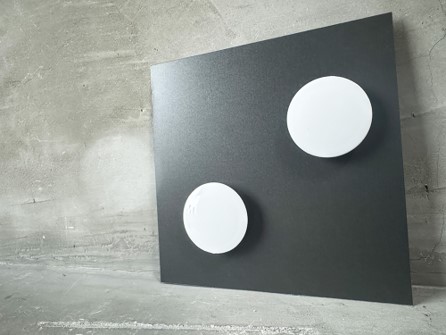
A common galvanized iron sheet.
Galvanized steel sheet is magnetic, so the magnet sticks perfectly.
General-purpose Stainless Steel SUS304 (Austenitic)
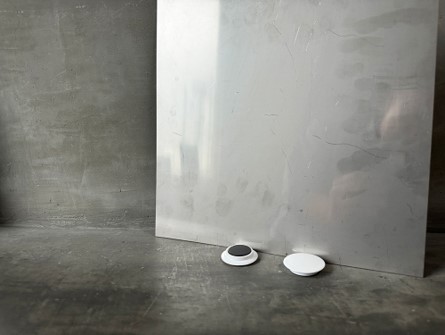
A commonly used stainless steel for outdoor use.
General-purpose stainless steel is non-magnetic, so the magnet does not stick at all.
However, bending and other processing can cause structural changes, making it magnetic in those areas.
Ferritic Stainless Steel
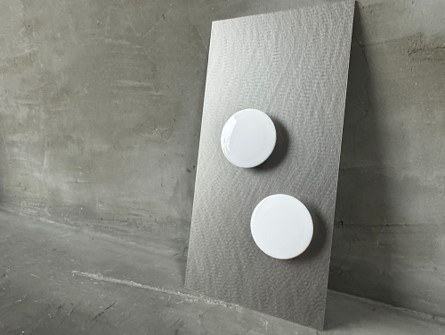
Ferritic stainless steel.
A typical example is SUS430.
SUS430 is magnetic, so the magnet sticks.
Aluminum

A common material made of aluminum.
Aluminum is non-magnetic, so the magnet does not stick at all.
Copper
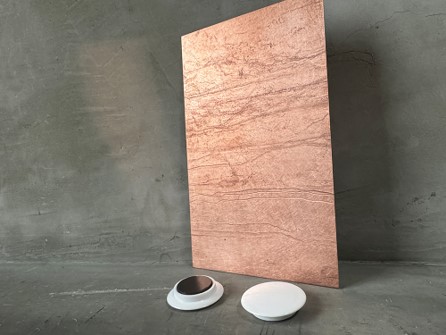
Copper sheet is non-magnetic, so the magnet does not stick.
Brass
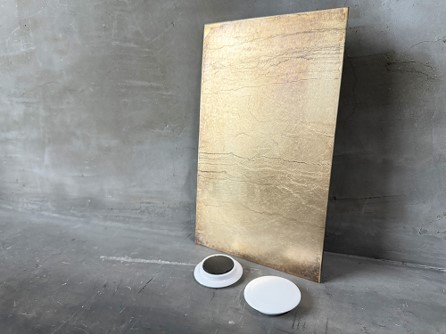
Brass sheet is non-magnetic, so the magnet does not stick at all.
How to Attach a Magnet to Non-magnetic Metals
If you absolutely need to attach a magnet to a non-magnetic metal.
One method is to attach a magnetic metal to the back to create a composite structure that will allow magnets to stick.

This is the non-magnetic SUS304 Mysterious Mirror stainless steel, but as shown, magnets can stick to it.


Using a magnetic metal as the backing material allows magnets to be attached.

